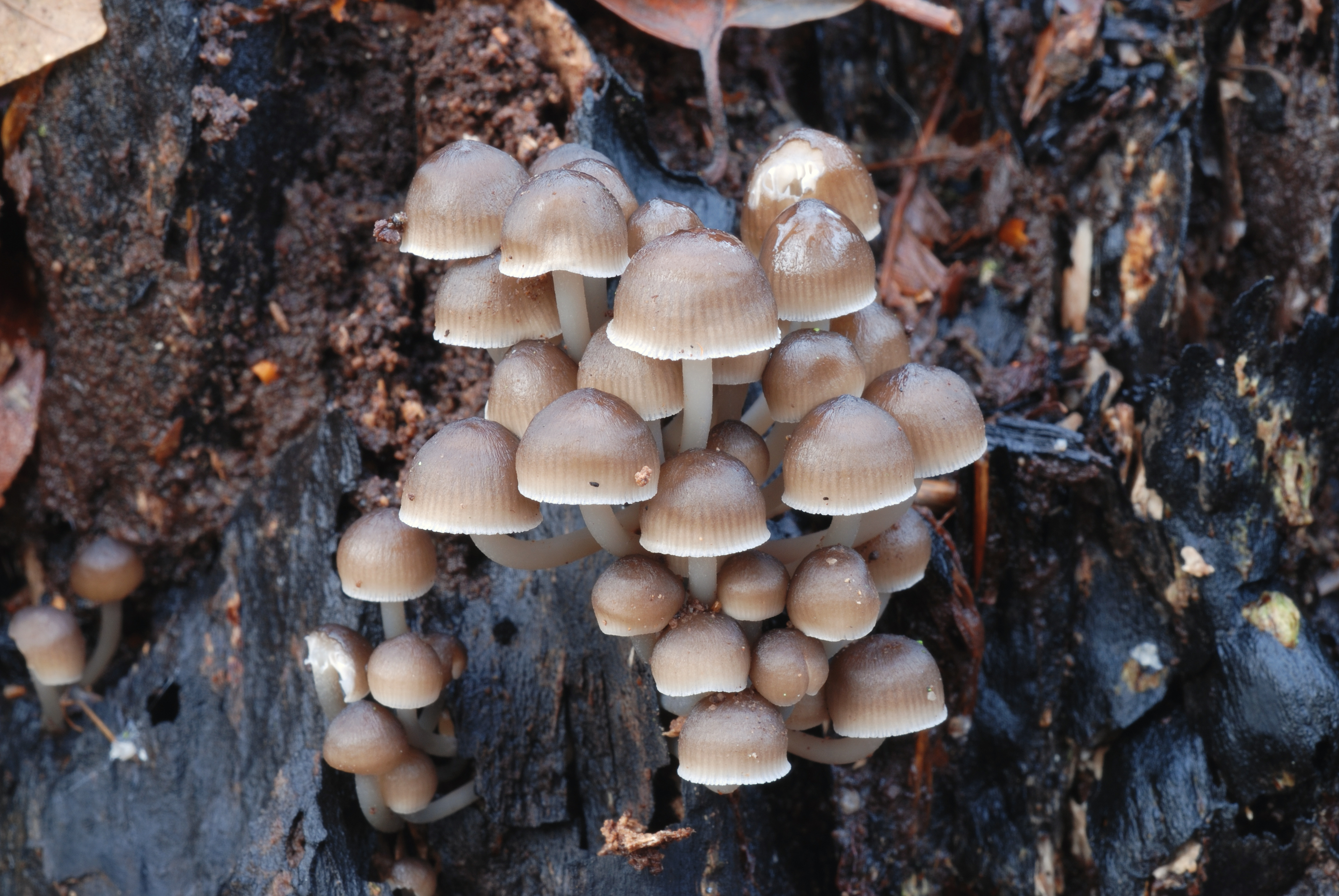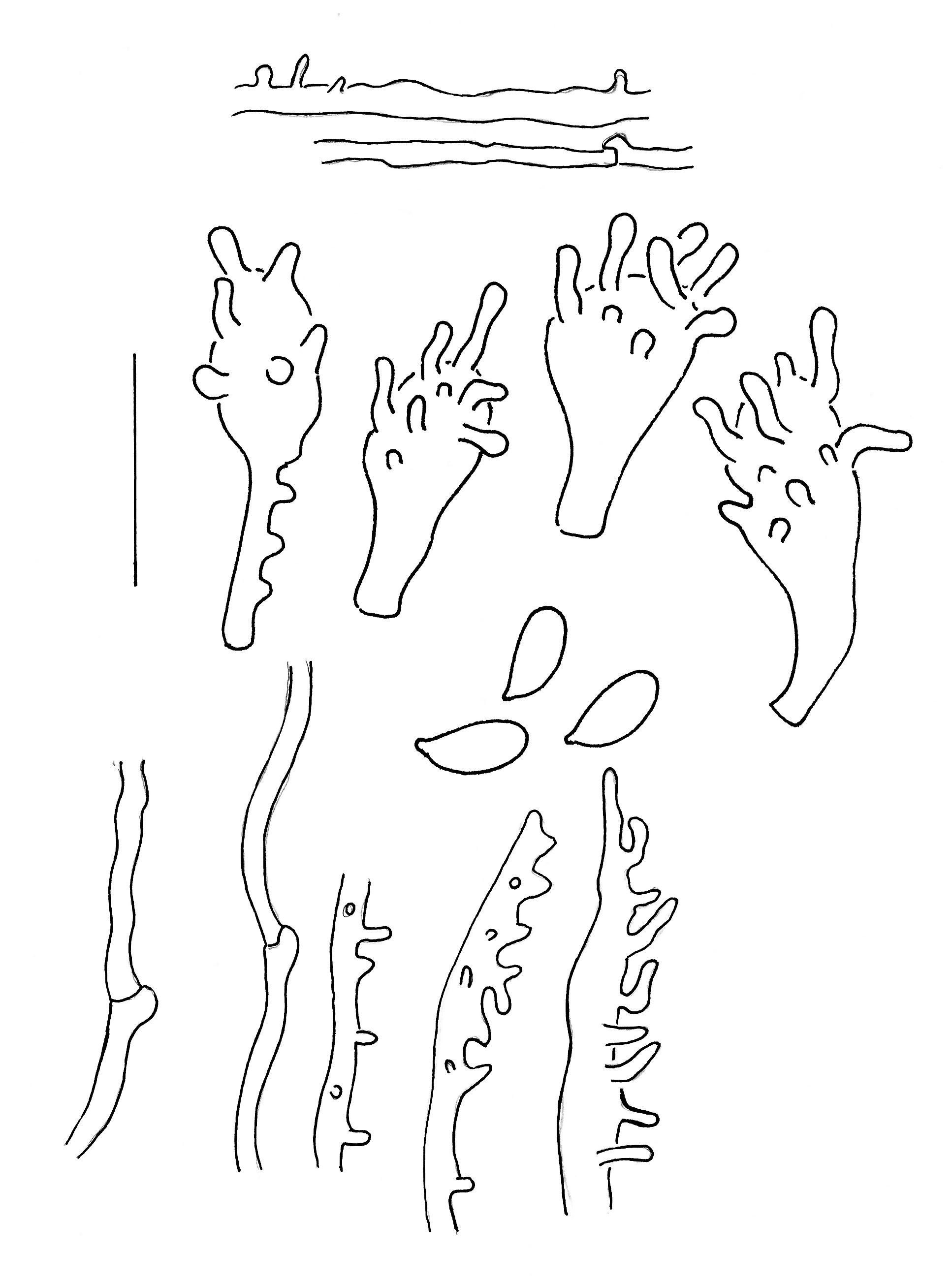Mycena tintinabulum
Mycena tintinabulum
- Innhold
- Description
- Ecology and distribution
Description
Hyphae of the pileipellis, cheilocystidia, spores, and hyphae of the cortical layer of the stem with terminal cells.
Cap 5-26 mm across, at first hemispherical, then conical, parabolical, convex to almost plane, ±umbonate or rarely slightly depressed, pruinose, glabrescent, not or very shallowly sulcate, not striate or only striate at the margin, lubricous to somewhat viscid, hygrophanous, blackish brown to pale brown or grey brown, drying to beige brown to greyish beige. Gills 23-28 reaching the stem, broadly adnate, decurrent with a tooth, elastic-tough, somewhat veined and forked with age, whitish to pale grey or very pale brown, with age sometimes with brown spots, or suffused with a pink flush. Stem 15-45 x 1-3 mm, cylindrical, equal, pruinose at the apex, glabrous farther down, at first whitish to greyish, becoming grey brown, yellow brown to dark brown with whitish apex, the base densely covered with whitish fibrils.. Odour indistinctive or experienced as spermatic, sourish or somewhat raphanoid-aromatic, as camembert cheese. Basidia 15-28 x 4.1-5 µm, 4-spored. Spores 4.5-6.5 x 2-3 µm, Q = 1.8-2.4, Qav = 2.2, narrowly pip-shaped, amyloid. Cheilocystidia 15-35 x 8-14, clavate to somewhat irregularly shaped, covered with fairly few, unevenly spaced, coarse, simple to branched, more or less curved excrescences 1.5-11 x 1-2 µm. Pleurocystidia absent. Hyphae of the pileipellis 1-3 µm wide, embedded in gelatinous matter, more or less smooth or with scattered excrescences, often undulate. Hyphae of the cortical layer of the stem 1.5-4 µm wide, embedded in gelatinous matter, smooth to covered with excrescences 2-10 x 1-1.5 µm, terminal cells widened to 7 µm, variously shaped, coarsely divericulate. Clamps present at all tissues.
Ecology and distribution
Densely gregarious to fasciculate on decayed wood of deciduous trees, typically Fagus. Often in great numbers. Late autumn to early winter. Found only a few places in Norway.

